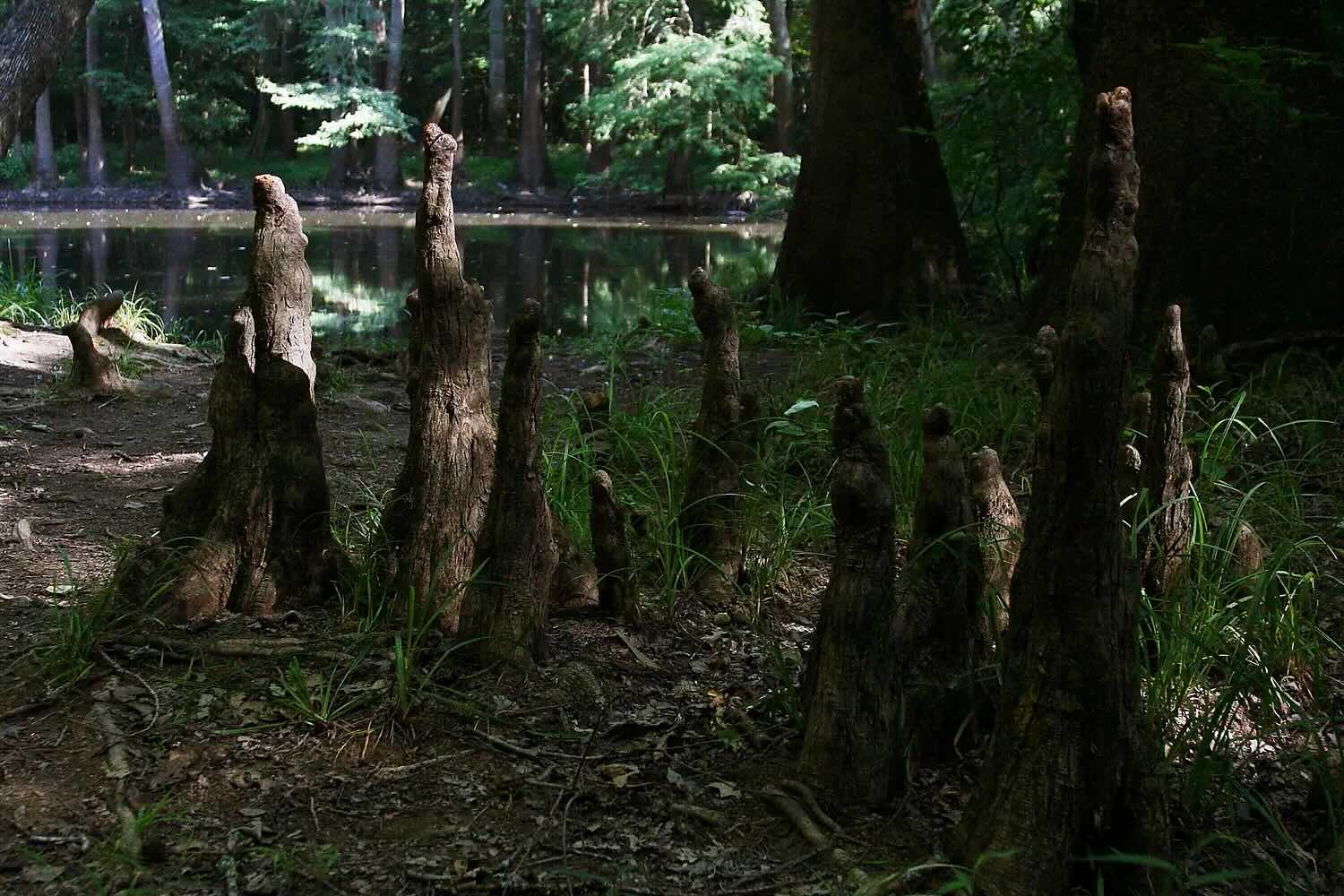Secrets Of South Carolina’s Congaree Swamp Cypress Knees

Have you ever wondered about the mysterious cypress knees in South Carolina's Congaree Swamp? These unique formations are more than just tree roots sticking out of the water. They play a crucial role in the swamp's ecosystem. Found in the heart of Congaree National Park, these knees help stabilize the towering cypress trees, especially during floods. They also provide a habitat for various wildlife, from small fish to insects. Visiting Congaree Swamp offers a chance to see these fascinating structures up close. Whether you're a nature lover or just curious, the cypress knees are a must-see.
Discovering Congaree National Park
Congaree National Park in South Carolina is a hidden gem. Known for its towering trees and unique ecosystem, it offers a glimpse into nature's wonders. One of the park's most intriguing features is the cypress knees. These mysterious formations have fascinated visitors for years.
What Are Cypress Knees?
Cypress knees are woody projections that grow vertically from the roots of cypress trees. They are often found in swampy areas and are believed to help the tree breathe. Some scientists think they also provide stability in the soft, muddy ground.
Best Spots to See Cypress Knees
To truly appreciate the beauty and mystery of cypress knees, visit these top spots in Congaree National Park.
- Boardwalk Loop Trail
The Boardwalk Loop Trail is a must-see. This elevated walkway takes you through the heart of the swamp. Along the way, you'll see countless cypress knees poking up from the water. It's an easy walk, perfect for families.
- Weston Lake Loop Trail
For a longer hike, try the Weston Lake Loop Trail. This 4.4-mile trail offers stunning views of the park's diverse ecosystem. You'll encounter cypress knees along the way, especially near the lake. It's a great spot for birdwatching too.
- Bluff Trail
Bluff Trail provides a different perspective. This trail takes you to higher ground, offering a bird's-eye view of the swamp. From here, you can see clusters of cypress knees below. It's a peaceful hike with fewer crowds.
- Kingsnake Trail
Kingsnake Trail is for the adventurous. This 11.7-mile trail winds through some of the park's most remote areas. You'll see plenty of cypress knees, along with other wildlife. It's a challenging hike but worth the effort.
- Oakridge Trail
Oakridge Trail offers a mix of scenery. This 6.6-mile trail takes you through both upland and lowland areas. You'll see cypress knees in the wetter sections. It's a great trail for those looking to experience different habitats.
Tips for Visiting Congaree National Park
Before heading out to see the cypress knees, keep these tips in mind.
- Wear Comfortable Shoes: Trails can be muddy, so sturdy footwear is a must.
- Bring Bug Spray: Mosquitoes are common, especially in the warmer months.
- Pack Water and Snacks: Some trails are long, and there are no facilities in the park.
- Check the Weather: The park can flood after heavy rains, making some trails impassable.
- Respect Wildlife: Keep a safe distance from animals and do not feed them.
Why Cypress Knees Matter
Cypress knees are more than just a curiosity. They play a crucial role in the swamp's ecosystem. By helping cypress trees survive in challenging conditions, they contribute to the health of the entire forest. Next time you visit Congaree National Park, take a moment to appreciate these natural wonders.
Discovering the Magic of Congaree Swamp Cypress Knees
Congaree Swamp's cypress knees are a natural wonder. These unique formations, rising from the swampy ground, create a landscape unlike any other. They play a crucial role in the ecosystem, helping to stabilize the trees and possibly aiding in oxygen exchange. Exploring this area offers a chance to see wildlife, enjoy peaceful walks, and learn about the swamp's history. Whether you're a nature lover, a photographer, or just curious, Congaree Swamp has something special to offer. Plan your visit to experience the beauty and mystery of these fascinating cypress knees. The swamp's serene environment and unique features make it a must-see destination in South Carolina. Don't miss out on this hidden gem.

